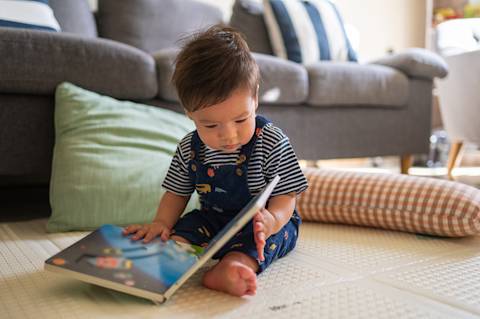Pets can bring joy and unconditional love to your family. By teaching your child how to respectfully interact with animals, you promote understanding, compassion, and a safe relationship between your children and your pets. These safety lessons will also benefit your child if they meet others’ pets when at their friend’s house or on a walk.

Interactions between children and pets will vary based on the child’s developmental stage. For babies (0–1 years), expect limited engagement with pets, primarily through observation. As they grow into toddlers (1–3 years), interactions can become more active, characterized by touching and exploring pets cautiously. With preschoolers (3–5 years), interactions can go a little further, including more understanding of and communication with pets.
It’s usually best for babies to limit their interactions with pets. Many pet owners prefer to have their babies and pets watch each other from a safe distance.
Supervise interactions: Always be present and attentive when your baby is near a pet.
Limit exposure: Keep pets out of your baby's sleeping area to reduce the risk of fur or dander affecting your baby's airways.
Create separate spaces: Establish a safe space for pets to relax and stay away from your baby's activity.
Use a baby carrier or stroller: Keep your baby in a carrier or stroller to maintain distance and avoid direct contact with unfamiliar pets when you’re at a park or on a walk.
As children grow into toddlers, interactions with pets might become more active, with gentle touches and cautious play.
Teach gentle handling: Encourage toddlers to pet animals softly and handle them with care. Show them where it’s safe to pet animals, such as on the back or sides. But explain that their hands should never go near the pet’s mouth.
Supervise interactions: Continue to closely monitor them, even if your toddler has a good relationship with the pet.
Encourage respectful boundaries: Instruct toddlers not to disturb pets during mealtime and when sleeping.
Discuss different body language cues: Teaching children to read a dog's or cat's body language helps them know when it is safe to interact with them. You can use simple language and examples to explain basic pet body language cues, such as wagging tails, folded ears, or growling. Let them know how they should respond when they see specific body language.
Teach your child to ask permission: Teach your toddler to ask pet owners for permission before approaching or petting any unfamiliar pets.
As preschoolers grow, their interactions with pets might become more advanced. They can develop a better understanding and ability to communicate with animals at this age.
Establish rules: Teach preschoolers to approach animals slowly and ask the owner for permission before petting a dog.
Enable opportunities: Provide a positive, controlled environment for your child and pet to interact and get to know one another.
Teach the emotions behind pets’ body language: At this age, you can start discussing more subtle signals and help them develop a better understanding of how pets communicate their emotions.
Provide positive interactions: Encourage preschoolers to handle pets gently and respectfully, using flat palms and avoiding sudden movements.
Reinforce safety rules: Remind your child regularly about the pet safety rules you’ve taught them as babies, toddlers, and preschoolers.
Teaching pet safety is important for ensuring your child's and your pets' welfare. By closely supervising interactions, teaching children boundaries, explaining body language cues, and fostering positive experiences, you create an environment where your pets and children can learn, grow, and thrive together.






